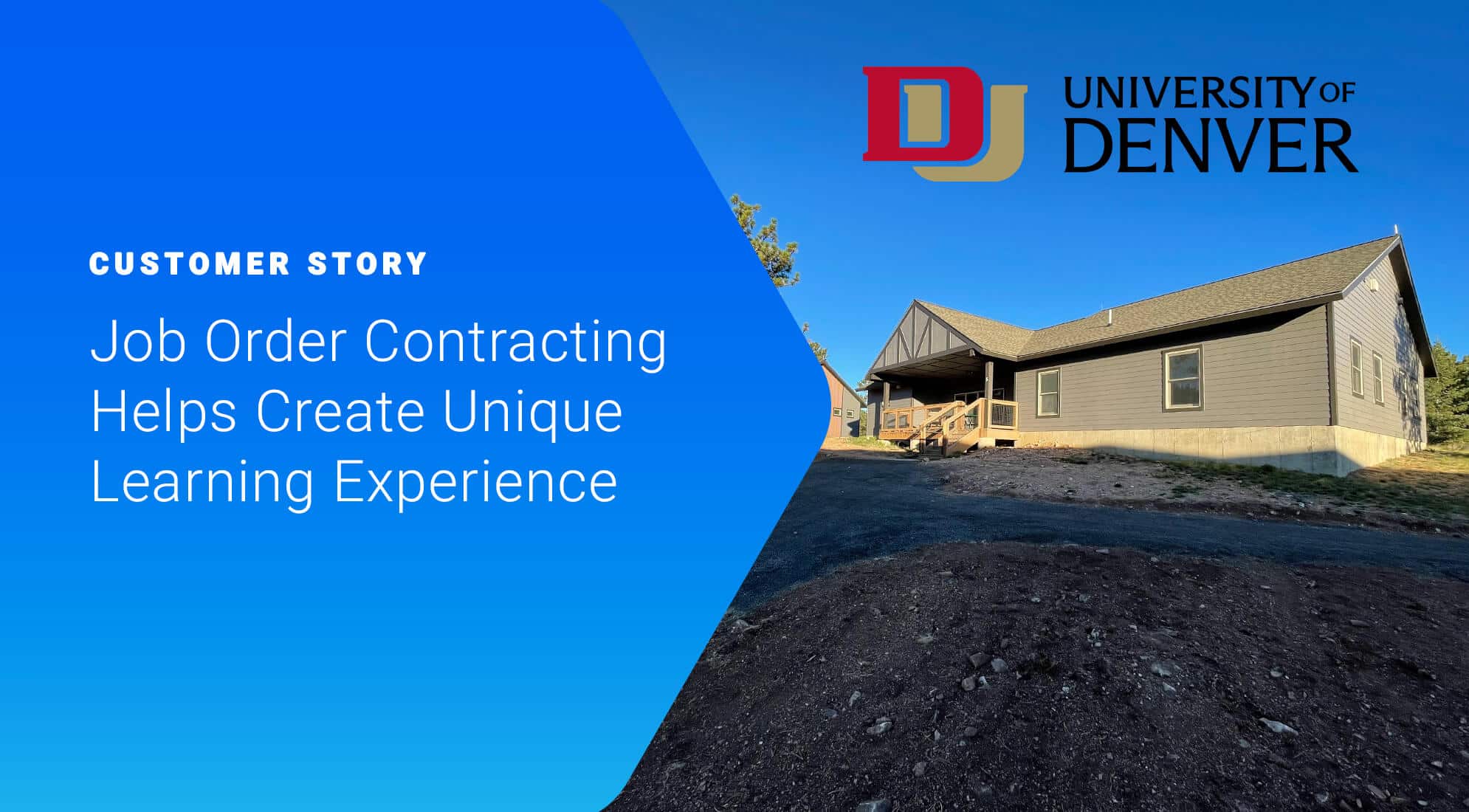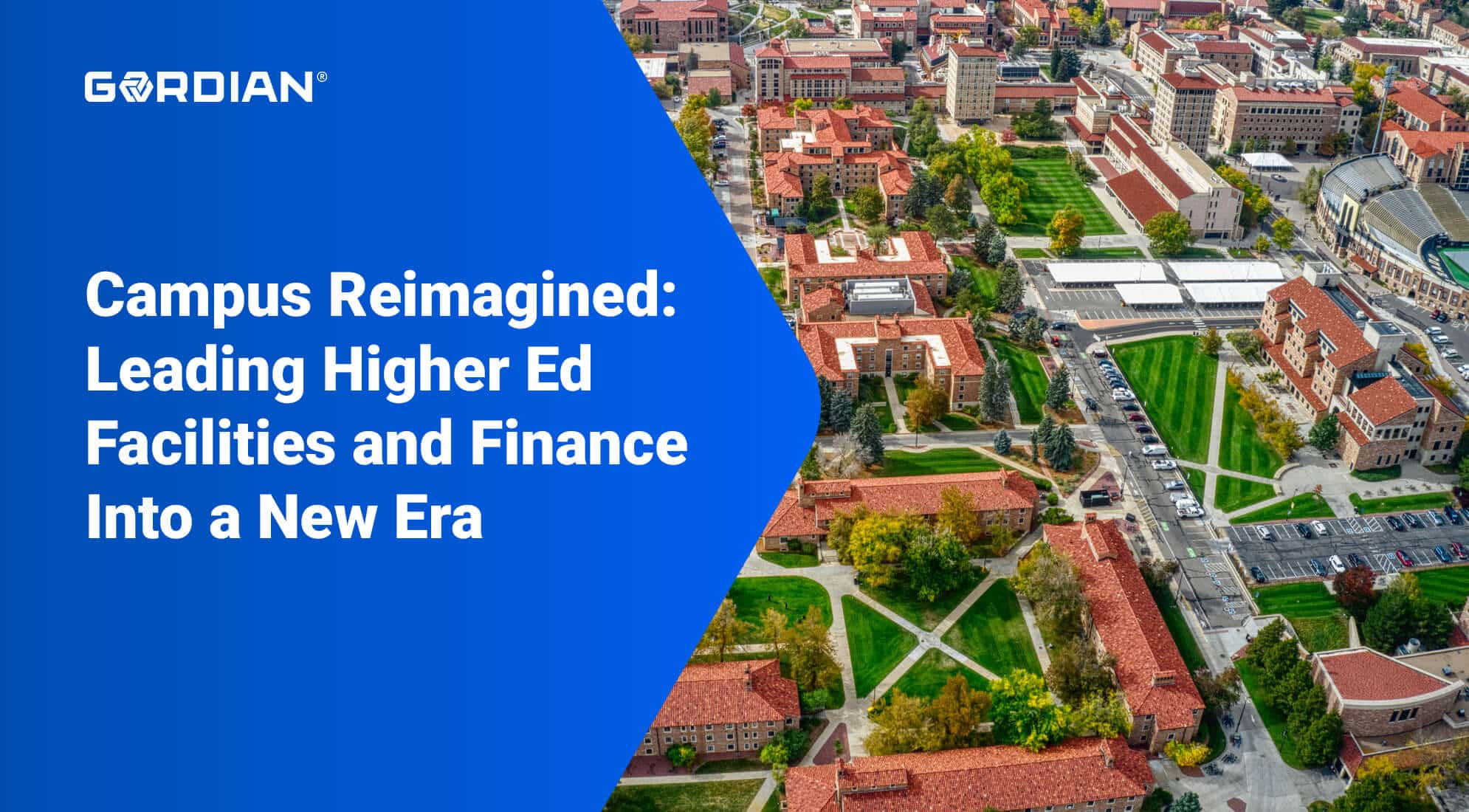In celebration of the 10th edition of the State of Facilities in Higher Education report, we interviewed three university facilities leaders for their personal take on the state of facilities in higher education. Read on for excerpts from our conversations with John Shenette, former VP of Facilities and Campus Services at Wake Forest University, Robert Davenport, Associate Vice President for Facilities Planning and Management at Wayne State University and John Morris, Vice President for Facilities Management at College of Charleston. They each provide valuable insights into the key trends they have observed and actions they have taken during their time in facilities leadership.
Q1. What are some of the highlights or memorable experiences from your work in higher ed over the past decade?
John Shenette: “The pandemic showcased everything about facilities and the power we can wield on campus. As a result, we worked with HR and senior leadership on pay equity. We went through every single job description in our organization, made sure that we had the right functions for each position and that we were current with market analysis. We made about $1.5 million in pay adjustments. Our biggest resource is our people, so this was a very memorable exercise.”
Robert Davenport: “In June of 2021, we had a major flood of five inches of rain over six hours. Eleven of our buildings were categorized at the most extreme or catastrophic level of damage. We had to move quickly to restore campus and get ready for fall. We were able to do it with the help of many in house employees and contractors, but what I found intriguing about this was that this really interrupted the usual lull in campus activity that facilities typically reserves for large projects. To have to pivot to a flat-out emergency was interesting, but we got the work done.”
John Morris: “The work that we do goes beyond facilities, and that is what stands out to me. I have seen tens of thousands of students come through and get their degree. We create the learning environment that makes them successful, which is the most rewarding thing. We make sure students’ living environment is just as memorable as their learning experience. All of this comes together to ensure student success.”
Q2. How has your campus space and staff coverage of campus space changed over the past decade?
Shenette: “We have worked with Gordian to focus on the density of our campus. Historically, there has been a tremendous effort to revitalize residence halls, athletic spaces and wellness areas, but little effort has been given to revitalizing academic spaces. We have now focused on prioritizing our academic spaces, which has created clarity on our space utilization.”
Davenport: “Wayne State has previously been more of a commuter school, but we are seeing a student population now that wants to live on campus and be engaged in campus activities. Academic leaders are responding to this trend as well. Post-pandemic, there is a strong desire to come back and be a community, so we’ve had to accommodate those desires.”
Morris: “Our condition index is declining, so I’ve been able to help the board of trustees really start to take a new look at that so that we can ensure we are making the correct investments to foster our facilities and make them last into the future. We’ve got a younger workforce coming in due to a large group of staff retiring, so we have amped up professional development opportunities for new hires.”
Q3. How have you seen the role of the facilities office shift over the years? And do you feel like there’s adequate recognition of facilities on your campus?
Shenette: “We implemented a campus utilization study that focused on making sure that we collectively understand the space that we have on our campus and ensure moving forward that we are pitching the right capital investments and being good stewards. We want to make sure we are touching on faculty, staff and student needs. Senior administration recognizes us as being fiscally responsible stewards and gives us the opportunities to raise the flag when a strategic need arises.”
Morris: “The pandemic certainly elevated the profile of facilities managers across the nation. We want to make sure to maintain that seat at the table. We’ve emphasized the connection between the built environment and student success, and sometimes that can get lost. We must maintain the awareness of the major role facilities management plays in academic and student affairs, or else we can run into capital renewal concerns, which can have a negative impact on students.”
Davenport: “Facilities has really evolved to be helpful to the broader organization. Facilities has traditionally been more of an engineering department, but now we oversee eight sub-sectors, ranging from operations and maintenance to construction, real estate and transportation. The scope of a facilities department is now much more comprehensive.”
Q4. Can you share any strategic initiatives on campus that were either implemented because of or led by facilities?
Davenport: “When we think about facilities management, there is truly a science behind the business. One of the more fundamental things about operations and maintenance in particular is planning and scheduling. We focus on a preventative maintenance approach to facilities management, so we get ahead of a lot of emergencies that might occur otherwise.”
Morris: “We led a new energy performance contract which allowed us to address some of our capital renewal needs and conserved energy. We are starting to see an increase in capital renewal dollars that we haven’t historically had, so that is driving decisions at the budgetary level for the institution on how we allocate dollars to take care of the built environment. There are benchmarking tools that can really help guide those decisions and put them in a context that the board of trustees understands so that the right decisions can be made.”
Shenette: “We pitched a master plan refresh and strategic capital planning effort led by us and based on our campus utilization study. There was a lot of excitement, so we had to ensure that we were leading the effort to make good investments in our facilities portfolio.”
Q5. Do you have any thoughts to share for the future of facilities leadership?
Morris: “Buildings now come with hundreds of thousands of data points. I believe we are on the cusp of starting to see even more technological advancements; big data and AI will help us manage all of this and work smarter so that we can provide a better experience for our building occupants.”
Davenport: “It is essential to have a proper preventative maintenance plan in place so you aren’t chasing problems around every other day. A strong capital renewal plan that is well funded is important to allow the operations and maintenance teams to focus on the most significant issues at hand. This is the science that goes behind understanding where your assets are and having a plan to replace them after they have reached their useful life.”
Shenette: “It’s an interesting time in facilities. There is a lot of pressure stemming from a variety of factors such as vacant space, aging staff, lack of funding and more. Facilities leaders need to be aware and take a good look at how they manage, why they are doing the work they are doing, and make sure they have the right resources to make positive change instead of being stagnant and complacent so that a positive legacy can be left on campus.”
Campus leaders across the country turn to Gordian’s State of Facilities in Higher Education report, published annually each spring, for the latest insights and analysis of facilities trends in the higher ed landscape. Check out our State of Facilities in Higher Education Resource Hub for more valuable information from Gordian’s database and from other facilities leaders.







